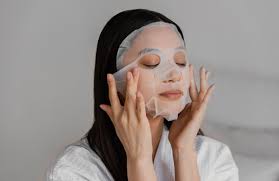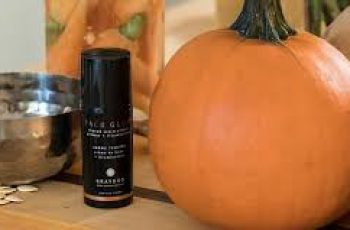
5 Creative Ways to Use the Excess Serum Leftover from Your Sheet Masks
After you finish applying a sheet mask, your skin often feels hydrated, refreshed, and glowing. However, many people discard the leftover serum remaining in the mask’s packet, which can be a real waste.
This enriched serum is packed with beneficial ingredients designed to nourish your skin, so tossing it out means missing out on extra care.
Luckily, there are several clever and effective ways to use every last drop of that valuable serum. Here are five dermatologist-approved ideas to make the most of the excess serum from your sheet masks.
1. Nourish Your Neck and Décolletage
While your sheet mask is still working its magic on your face, don’t forget the skin below. The neck and décolletage are often neglected areas that can benefit greatly from extra hydration and nutrients.
Take the serum left at the bottom of the mask packet and apply it generously all over your neck and chest.
This skin is thinner and more delicate, so using the serum can help improve its texture and reduce signs of aging.
Once you remove your sheet mask, avoid washing off the remaining product on your face. Instead, gently pat any leftover serum into your skin for an additional moisture boost.
This small extra step can visibly enhance the glow and suppleness of your entire upper body area, not just your face.
2. Target Dry and Rough Skin Spots
Certain parts of your body are notorious for becoming dry and rough, such as the knees, elbows, and ankles.
These areas often develop a dull, flaky appearance due to constant exposure and frequent bending or stretching. The leftover serum from your sheet mask is an excellent remedy for these stubborn dry patches.
Apply the serum liberally to these spots, allowing it to soak in fully. For best results, apply the serum in the evening, followed by a rich body moisturizer to lock in hydration.
Wearing long-sleeved pajamas and full-length bottoms can also help prevent the serum and moisturizer from rubbing off during the night, enabling deeper absorption and lasting softness.
3. Pamper Your Hands and Cuticles
Your hands and cuticles can also greatly benefit from the nourishing ingredients in sheet mask serum.
Dry, cracked cuticles are uncomfortable and can detract from the overall appearance of your hands.
To combat this, apply the excess serum directly onto your hands and nails, focusing especially on the cuticle area.
For an intensive treatment, don’t throw away the sheet mask itself. Cut the mask into strips that fit around your fingers and nails.
After dabbing serum onto your nails and cuticles, wrap the cut mask strips around your fingers to lock in the moisture.
This method acts like a mini hand mask, hydrating your cuticles deeply and softening rough skin overnight.
You’ll wake up to nails that look healthier and cuticles that feel nourished and protected.
4. Create Your Own DIY Sheet Mask
If you’re feeling crafty, you can turn the leftover serum into a homemade sheet mask.
Gather some cotton pads, place them inside the empty mask packet containing the serum, and seal the packet tightly. Pop it into the fridge to keep the serum fresh.
After about a day or two, the cotton pads will be fully soaked with the nourishing serum.
When ready to use, take the pads out and carefully peel them apart to create thinner layers that can cover more of your face.
Gently place these DIY serum-soaked cotton pads onto your skin, avoiding sensitive areas like the eyes, nose, and mouth.
This method allows you to extend the benefits of your sheet mask, giving your skin a second dose of hydration and nourishment in a fun and inexpensive way.
5. Save the Serum for Later Use
If none of the above ideas suit you, you can simply save the leftover serum for future use. After finishing the sheet mask, reseal the packet tightly to prevent the serum from drying out.
Store it in the fridge to keep the product fresh and potent. This way, you can return to it within a couple of days.
Instead of using a full sheet mask again, you can apply the saved serum after your regular skincare routine. Just pat it gently onto your face and neck until fully absorbed.
This can serve as an excellent hydrating primer before makeup application, helping to create a smooth, radiant base for foundation.
Saving the serum ensures you maximize your skincare investment without unnecessary waste.
Why It’s Important to Use All That Serum
Sheet masks are formulated with highly concentrated ingredients that provide hydration, antioxidants, and other skin-loving benefits.
Throwing away the leftover serum means discarding valuable skincare that could enhance your skin’s health and appearance.
By using the serum on additional areas like your neck, hands, or dry spots, you extend the nourishing effects and get more bang for your buck.
Not only does this reduce product waste, but it also helps your skin receive consistent care from multiple angles.
Many of us forget to care for areas beyond the face, like the décolletage or cuticles, which can show early signs of aging or damage.
Using leftover serum on these parts helps keep them soft, smooth, and radiant.
Additional Tips to Get the Most From Your Sheet Mask Serum
Always handle the leftover serum with clean hands to avoid contamination.
Refrigerate the leftover serum when storing it to preserve its active ingredients.
Be mindful of the serum’s shelf life; most leftover serum should be used within 1-2 days.
Pair the serum with a moisturizer or barrier cream after application to lock in hydration.
For a more intensive treatment, apply the serum and cover the area with a warm towel to enhance absorption.
If you want more skincare hacks and expert advice, be sure to check out our YouTube channel, The Green Sofa.
We regularly share tips, tutorials, and product reviews that can help you improve your skincare routine effortlessly.
Hit the subscribe button so you never miss out on valuable information that helps you look and feel your best!


